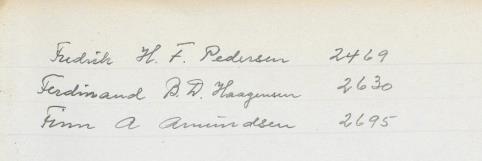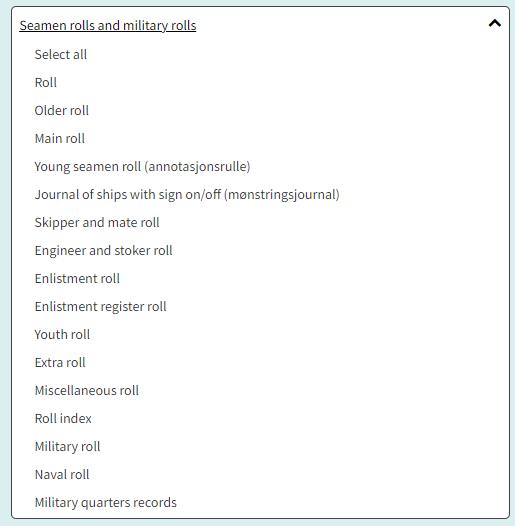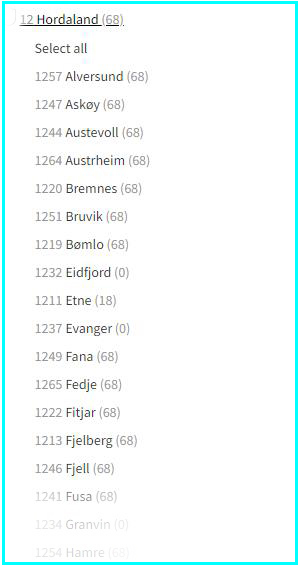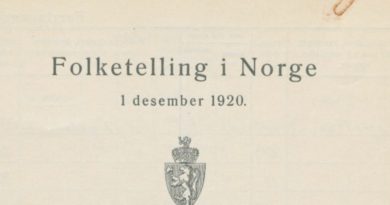Did your forefather go to sea?
Norway’s long coast meant that a number of men had their livelihood at sea. Many of us have ancestors among these. The civilian and military crew at sea have been registered by various bodies over the years. This overview shows where we can find information about these.
Following this link, we find all the naval records collected in the Digital Archives; Seamen’s rolls and military rolls. Here we will have to go into the “geography” heading and filter our search to the area in question (See below).
Brief history
From 1703, rolls were kept over the male portion of the population available for military service. The enrollment records give an overview of the male part of the population and indicate the year of birth and place of birth. Parts of this material are scanned and posted on the Digital Archives.
Before 1814, it was a joint Danish-Norwegian navy. The main base was located in Copenhagegiveere the majority of the fleet was stationed. Most records pertaining to the navy are in Danish military archives.
From 1860 all seafarers in foreign trade were registered in maritime rolls (registers). First-time boys were introduced to the “Young seamen roll – annotation roll”. In some of these rolls, the records are alphabetized by first name. The number behind their name is their certificate number (Patent nummer). These are recorded in ascending order.

Some of the rolls are recorded based on certificate number (Patent nummer) only. All the records are, as far as I can tell, recorded in chronological order.
When the men had sailed in foreign trade for 12 months after age 15, they were defined as “half-sailed” and transferred to the “Main roll”. Like the “Young seamen roll” some of these records are oranized by name while some by certificate number in ascending order.
For the rolls with no name index, we will have to browse until we come to the most likely years for our ancestor to have gone to sea. Many went to sea as soon as they were confirmed about 5 year of age.
In the rolls are entered the ships the sailor had sailed on as well as when he mustered on and off. It was also noted what kind of position he had on board. In this way, the maritime rolls provide a picture of each sailor’s history of navigation.
Many of the rolls are scanned and located on the Digital Archive . Of them, the rolls completed before 1930 are freely available online. In some cases, newer rolls are available.
There are also specific records for those who sailed as Captain or First Officer: Skipper and mate roll and for those who sailed as Engineer or Stoker
Finding the correct records
 I have above given you some links to records on the Digital Archive. I will however, strongly encourage you to explore all the records yourself. My reason for this is that there seems to be records from different timeframes registered under different headings.
I have above given you some links to records on the Digital Archive. I will however, strongly encourage you to explore all the records yourself. My reason for this is that there seems to be records from different timeframes registered under different headings.
In order for us to zoom in on the most relevant hits, we need to use the “geography” and “Period” filters in the “Find source” feature.
Filtering the search

Here I have searched the “Older roll” and are using the “Geography” filter to look for records from Hordaland county. By the small numbers behind the names, we can see what parishes that are represented in these records.
We can see that most of the parishes are represented in 68 records under the “Older roll” heading. Etne parish are represented in 18 records, while Eidfjord and Evanger parishes are not represented in the records covered under the heading “Older roll”.
Some of the older records are written in hand-drawn forms. These can be very hard both to navigate and to read.
I will come back with a follow up article where I look at the records that are written in preprinted book.
I hope this article is helpful. Please comment below if you have any questions.





